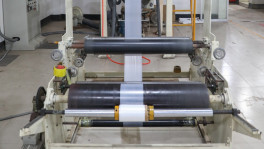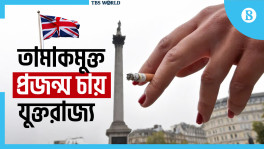Public transports: To ride or not to ride?
The government has resumed public transports as part of relaxing the shutdown but worries remain over maintaining physical distancing while riding and alighting from vehicles

Sayeeda Kamal most of the time travels to her office by bus from Khilkhet in the capital. But using public transportations while coronavirus cases are still on the rise have got her all tense. She fears that all her efforts to keep herself and her family members safe from the virus will be in vain if she uses public transportations now.
"Riding a bus is never an easy task in Bangladesh and this is even harder for a woman. There was never a separate line for women. Moreover, buses barely stop at bus stops and most of the time, they pick up passengers while the wheels are still rolling. I fear this practice will continue this time as well," she said.
Sayeeda also pointed out that though the number of buses has not increased and they have now been directed to ply on the roads with 50 percent of the seats empty, the competition to ride a bus will now increase to a further extent.
In Dhaka, approximately 21 million people commute every day by different types of public transportations and the most used mode is the bus. According to the Sustainable Urban Transportation Index, in the Greater Dhaka Metropolitan Area (DMA), there are 152 bus routes, and 44.7 percent of the daily trips are mainly related to work while 17.7 percent are related to school.
Among all the public transport modes available in the DMA, buses are contributing to approximately 64 percent of the passenger trips. This means amongst the 21 million people, more than 10 million use local buses. Unfortunately, there are around 7,000 buses that run through the different routes of the city.
On Friday evening, the government decided to resume public transports but said buses would have to keep 50 percent of the seats empty and cannot carry standing passengers. The government further said passengers will have to maintain a three-foot distance from each other while getting on a bus, transport workers have to clean every bus with disinfectants and drivers and helpers must wear face masks.
The government also increased the fares of all buses, including inter-district bus services, by 60%.
A senior police official of Dhaka Metropolitan Police, who wished to remain unnamed, said, "It is not possible to maintain physical distance on buses running on city routes. Most of them are minibuses and have a seating arrangement of 42-50 people. There is hardly any leg room. In such a congested place, it is hard to maintain physical distancing."
However, the issue is not only about congested, small buses. The workers, especially helpers and drivers, tend to take more passengers than the capacity.
Khairul Islam, a regular commuter on Abdullahpur-Moghbazar route, said, "Before the shutdown, seating services charged extra but always took passengers beyond capacity. I fear they will do the same thing now, meanwhile, charging more fare."
"Our buses are congested and helpers always stand at the door. I doubt if we can truly maintain physical distancing while riding the bus and getting off," added Khairul.
Khondoker Enayet Ullah, secretary general of the Bangladesh Road Transport Owners' Association, said they would follow the instructions given by the government and the BRTA but admitted it would be difficult.
"Maintaining physical distancing while riding and leaving the vehicle will not be a problem in the case of intercity buses but we may face difficulties in intra-city buses. I would urge the passengers to help us in this regard."
Regular commuters said the bus companies should introduce a ticket system, create separate lines for men and women, and monitor the position of helpers and drivers as there is a chance of transmission of the virus by them as well.
When asked how the police can help manage social distancing in buses, the senior police official of the Dhaka Metropolitan Police said, "We will try to monitor if the bus companies are playing by the rules. But we cannot always check every bus to see if they are maintaining physical distancing in every bus stop."
The number of coronavirus-infected people in Bangladesh is still on the rise and if proper physical distancing cannot be maintained this time it might wreak havoc.
Dr Ruhul Forkan Siddique, former director of the health directorate and a professor of public health at Jahangirnagar University, suggested passengers wash their hands for at least 20 seconds after reaching their destinations and before doing anything else.
"Bus owners should continuously disinfect their buses, both the interior and the exterior, after every trip. Anyone getting out of the house should use masks and gloves."
Environmental engineer and Managing Director of Esolve International Limited Dr Asif M Zaman suggested the government develop a central application that will notify the bus operators, the law enforcers and the passengers whether there is any space remaining in the bus and when the next bus is available.
"If we can develop a central application it can help us to a great extent. In my opinion, I would suggest we start digitalising our public transportation system to make things easier for everyone."


 Keep updated, follow The Business Standard's Google news channel
Keep updated, follow The Business Standard's Google news channel
















